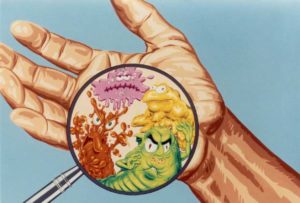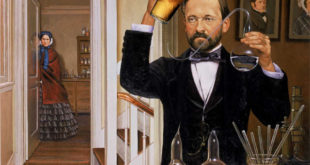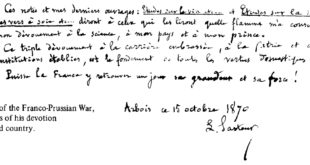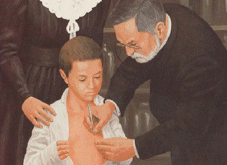
Louis Pasteur was famous for discovering that bacteria and germs are “almost everywhere” in the environment. Pasteur showed that germs hang on dust particles in the air, attach themselves to surfaces during experiments and expose themselves on medical instruments during surgery. One way to highlight Pasteur’s discovery is with an experiment of your own! You will take a sample from any surface in the environment and cultivate the bacteria you sample in a petri dish. You will not need a microscope for this experiment. The sample will eventually grown, with the help of the agar nutrient, into a culture visible to the naked eye!
List of materials you will need for this experiment:
- Petri dish
- Agar nutrient powder
- Cotton swab or q-tip
- Microwave-safe container
- Water
- Microwave
- Or you could purchase an already compiled bacteria experiment kit.
Prepare the Petri Dish
In this step you will prepare the petri dish with the agar nutrient. This nutrient solution will “feed” the germs and allow them to rapidly grow so they will be visible without the microscope.
- Take a clean, microwave-safe bowl and mix 1/4 cup water and 1/2 teaspoon of agar nutrient.
- Bring this mixture to a boil in the microwave and ensure it does not boil over.
- Stir well until mixture is clear and nothing is floating in the solution.
- Allow mixture to cool for 3-5 minutes before moving to next step.
- Open the petri dish and carefully fill the bottom half with warm agar nutrient solution.
- Place the lid on the petri dish and allow solution to cool and harden for at least an hour before moving on to the next step.
Collect Bacteria Sample
Pasteur showed that different types of bacteria grow in different places and under different circumstances. There may be bacteria in the places you least expect or the places you think are the most clean. It is fun and educational for kids to take a sample for a supposedly sterile area.
- Take a cotton swab or q-tip and lightly dampen with water to create a wet surface that the germs can adhere to.
- Lightly wipe the swab on the inside of your mouth, a doorknob, the keys of the TV remote, your favorite toy or anywhere else you choose. Be sure to wipe the swab around the entire surface to get a good sample. Simply dabbing the swab may result in a very small or “invisible” sample to the eye.
- Open the lid of the petri dish and LIGHTLY wipe the swab onto the solution inside the petri dish. You are essentially transfering the germs into the petri dish from your swab. Pasteur showed the importance of this and how germs are transferred from surfaces and even in the air. This is the main reason we wash our hands!
- Place the lid on the petri dish and label with masking tape. If you are making multiple samples, label with the date and surface you chose.
- Place petri dishes into large plastic zip lock bags. DO NOT EVER OPEN THE ZIP LOCK BAGS AFTER INSERTING SAMPLES! As the bacteria grows into a larger sample, it could be dangerous. You could be culturing a pathogen! Make sure to keep the sample enclosed in the bag at all times!
- Place the samples in a warm place to grow. Not too warm, up to 98 degrees.
Examining the Results
As Pasteur showed, your results will vary depending on the types of germs you collected. The shapes, sizes, colors and even smells of the samples will be different too. Don’t open to smell! If your germs don’t grow, don’t be discouraged. You could have sampled a clean surface, the temperature could have been too extreme or some other variable of the experiment could have been wrong. Just try again, you’ll get germs, I promise you!
Notice how the germs grow in small separate areas? Those are called germ colonies. They start with a small sample in the middle and as the germs multiply, the colony grows outward to form a larger mass. As the germ samples grow in size, they become more dangerous. Imaging if you were cultivating the germs of the common cold or even the flu virus! Take care and have fun!
 Pasteur Brewing Louis Pasteur – Science, Health, and Brewing
Pasteur Brewing Louis Pasteur – Science, Health, and Brewing 


